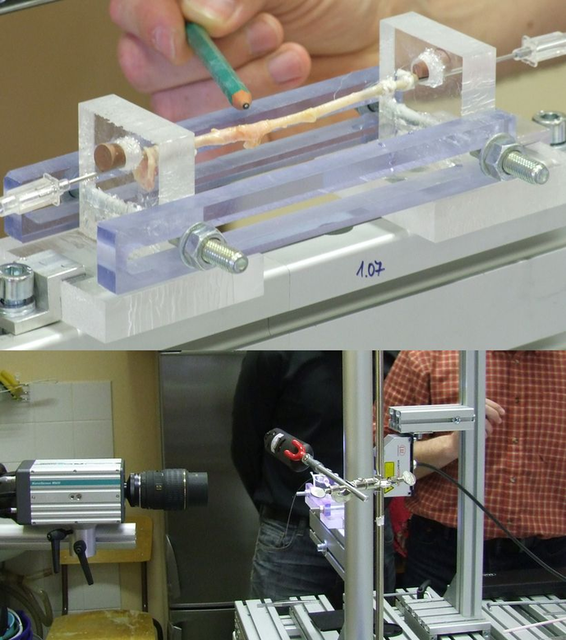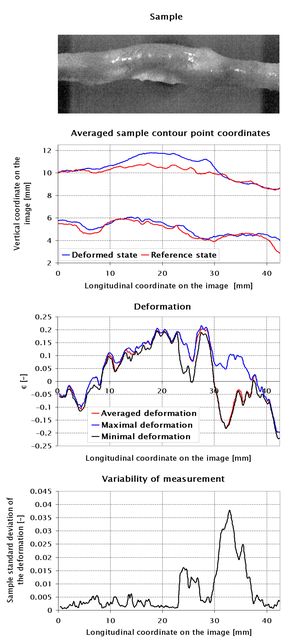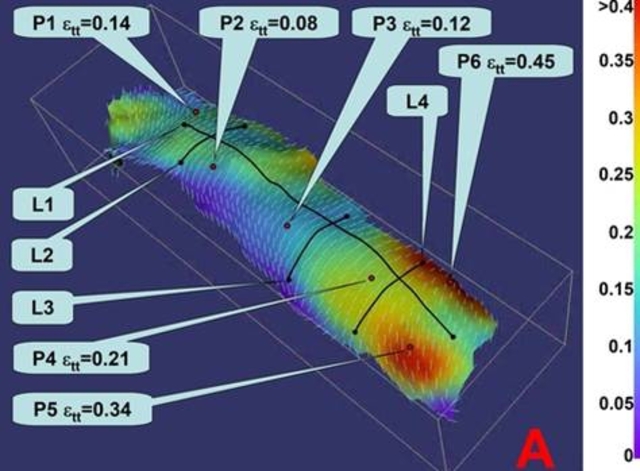
Kardiovaskulární systém a jeho náhrady
Interakce tepenné stěny s implantovaným stentem
Popis projektu:
-
Perkutánní koronární intervence je dnes běžným kardiologickým výkonem, který umožňuje zprůchodnění cévy v místě stenózy tak, aby bylo obnoveno krevní zásobení. Lze-li zákrok provést, přináší výhodu menší zátěže pro pacienta než představuje chirurgické řešení.
-
Princip spočívá v expanzi "drátěné výztuže" na místě zúžení tak, že cévu uzavírající plát je vtlačen do tepenné stěny.
-
Přes velký pokrok je tento výkon spojený s nedořešenými otázkami - optimální tvar a velikost stentu, minimalizace poranění cévní stěny stentem, dlouhodobá úspěšnost výkonu.
-
V laboratoři provádíme experimentální expanze balónkových stentů s cílem zmapovat mechanickou interakci mezi stentem a tepennou stěnou.
Vlevo - Princip koronární intervence s implantací stentu.
Střed - Experimentální sestava.
Vpravo - Výsledky analýzy obrysů.
Ukázka pole deformací při experimentální ex vivo implantaci koronárního stentu zjištěného pomocí 3D DIC (digitální korelace obrazu).
Publikace
L. Horny, H. Chlup, R. Zitny, T. Vonavkova, J. Vesely, P. Lanzer (2012) Ex vivo coronary stent implantation evaluated with digital image correlation. Experimental Mechanics, in press. DOI: 10.1007/s11340-012-9620-6
L. Horny, H. Chlup, J. Vesely, E. Gultova, J. Kronek, R. Zitny, T. Vonavkova, T. Adamek, P. Lanzer, D. Hromadka (2011) In vitro Coronary Stent Implantation: Vessel Wall-Stent Interaction. IFMBE Proceedings 37:795-798. DOI: 10.1007/978-3-642-23508-5_207
doc. Ing. Lukáš Horný Ph.D. ; Ing. Hynek Chlup Ph.D.Řešitelé:
Ústav soudního lékařství 3. lékařské fakulty Univerzity Karlovy a Fakultní nemocnice Na Královských Vinohradech
Kardiologická klinika 2. lékařské fakulty Univerzity Karlovy a Fakultní nemocnice v Motole





